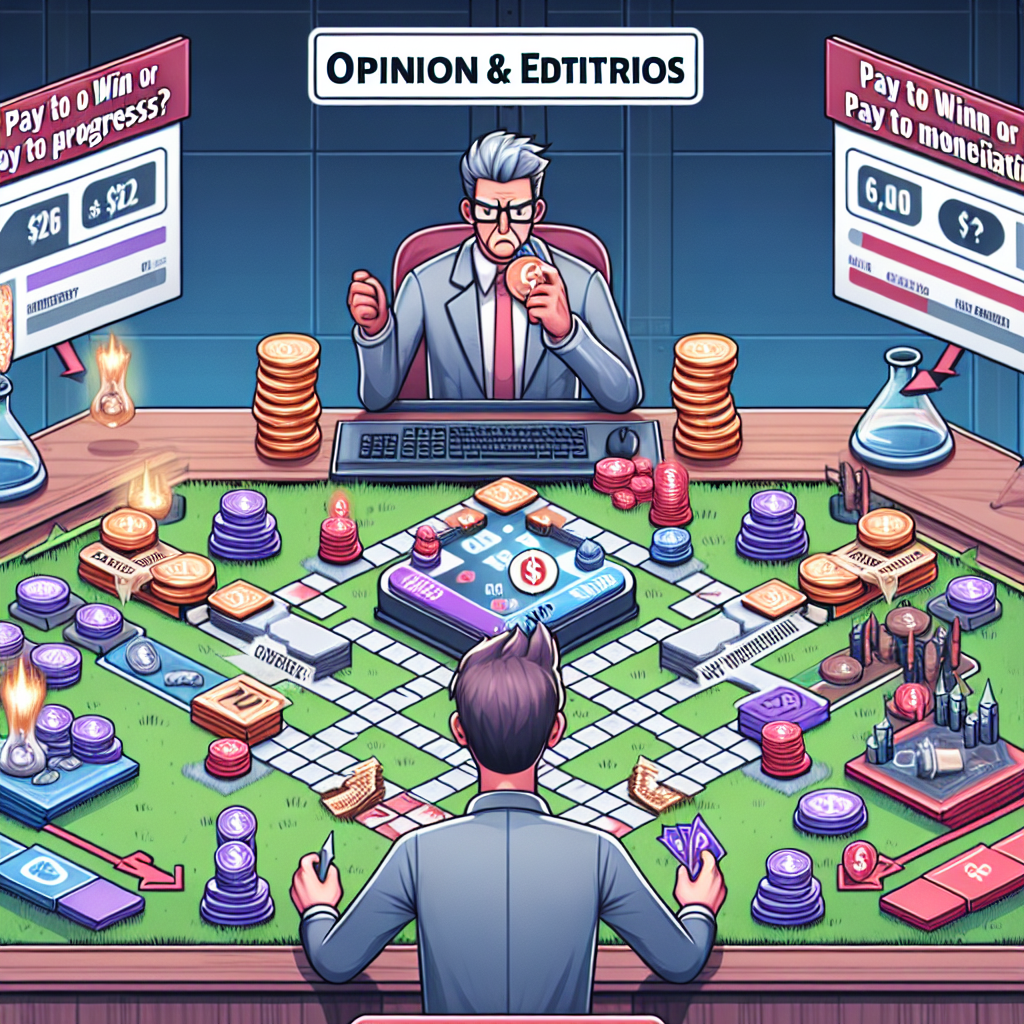Pay to Win or Pay to Progress? The Gray Line of Monetization
Examining Microtransactions and Their Effect on Player Loyalty
The world of gaming has long been a battleground for the debate around monetization models. As the industry has evolved, one particular form of revenue generation has become increasingly prevalent - microtransactions. These small, in-game purchases that allow players to acquire virtual items, accelerate progress, or gain advantages have become a staple in many modern games. However, the implementation of microtransactions has also sparked significant controversy, with concerns surrounding the impact on player experience, game balance, and even the overall integrity of the gaming ecosystem.
The Rise of Microtransactions
The advent of mobile gaming and the widespread adoption of free-to-play (F2P) models have been instrumental in the proliferation of microtransactions. By offering games at no upfront cost, developers and publishers have been able to attract a vast user base, with the expectation that a portion of these players will engage in optional in-game purchases. This shift has fundamentally changed the way games are designed and monetized, often prioritizing revenue generation over pure gameplay experiences.
The Allure of Microtransactions
Microtransactions offer a compelling value proposition for both players and game creators. For players, they provide a means to enhance their gaming experience, whether by unlocking cosmetic items, gaining access to exclusive content, or accelerating progression. This can be particularly appealing for time-constrained individuals who are willing to pay to overcome in-game obstacles or challenges.
From the developer's perspective, microtransactions present a reliable and potentially lucrative revenue stream. By creating a sense of scarcity or exclusivity around certain virtual items or features, game companies can incentivize players to make repeated in-game purchases, generating a steady flow of income. This model has been embraced by numerous game studios, from mobile app developers to major triple-A publishers.
The Slippery Slope of Pay-to-Win
However, the implementation of microtransactions has not been without its critics. One of the primary concerns is the potential for games to become "pay-to-win" (P2W), where players who are willing to spend more money can gain significant in-game advantages over those who do not. This can undermine the core gameplay experience, as the competition becomes less about skill and more about one's willingness to open their wallet.
In some cases, game developers have been accused of deliberately designing their games to be imbalanced or grindy, forcing players to either invest considerable time or money to progress. This practice, known as "pay-to-progress," can create a frustrating experience for players who feel compelled to make purchases in order to maintain a competitive edge or continue enjoying the game.
The Impact on Player Loyalty and Engagement
The prevalence of microtransactions and the potential for pay-to-win or pay-to-progress mechanics have had a significant impact on player loyalty and engagement within the gaming industry.
The Erosion of Trust
As players become more aware of the monetization strategies employed by game developers, there has been a growing sense of distrust and resentment towards those who prioritize revenue generation over player-centric design. When players feel that the game's progression system or competitive balance has been deliberately skewed to incentivize in-game purchases, it can lead to a breakdown in trust between the player and the developer.
This erosion of trust can have far-reaching consequences, as players may become less inclined to engage with new games or even abandon previously enjoyed titles. The perception of a game being "pay-to-win" or unfairly biased towards those who spend money can lead to a backlash from the community, which can ultimately harm the game's long-term success and viability.
The Impact on Player Engagement and Retention
The implementation of microtransactions can also have a direct impact on player engagement and retention. When players feel that their progress or enjoyment of the game is being hindered by the need to make in-game purchases, it can lead to frustration and a decline in overall engagement.
In some cases, players may become disheartened by the realization that their skill or dedication is no longer the primary factor in determining their success within the game. This can result in a loss of motivation, as players may feel that their efforts are being undermined by the ability of others to simply buy their way to the top.
Furthermore, the constant pressure to make additional in-game purchases can create a sense of fatigue or burnout among players, leading them to disengage from the game entirely. This can be especially problematic for games that rely on a large and active player base to sustain their longevity and profitability.
Balancing Monetization and Player Experience
As the gaming industry continues to grapple with the challenges posed by microtransactions, there is a growing need for developers and publishers to strike a delicate balance between monetization strategies and maintaining a positive player experience.
Transparent and Fair Monetization Practices
One approach that has gained traction is the implementation of more transparent and fair monetization practices. This can involve clearly communicating the impact of in-game purchases, avoiding predatory or manipulative tactics, and ensuring that any advantages gained through spending are not disproportionate to the overall gameplay experience.
By prioritizing player trust and satisfaction over short-term revenue gains, game companies can foster a more sustainable and loyal player base. This may involve offering optional cosmetic or convenience-based microtransactions that do not directly impact gameplay, or implementing fair progression systems that allow players to advance without feeling compelled to make purchases.
Emphasizing Skill and Gameplay over Spending
Another key aspect of balancing monetization and player experience is to emphasize the importance of skill and gameplay over spending power. This can involve designing games that reward players for their dedication, strategic thinking, and mastery of in-game mechanics, rather than simply their willingness to spend money.
By creating a level playing field where all players have a fair chance to succeed, game developers can foster a sense of community, healthy competition, and genuine player engagement. This approach may be more challenging to implement, as it requires a deeper understanding of game design and a commitment to prioritizing the player's experience over short-term financial gains.
Embracing Alternative Monetization Models
Finally, some game developers have explored alternative monetization models that move away from the traditional microtransaction-driven approach. This can include subscription-based models, where players pay a recurring fee to access the full game experience, or one-time purchase models that provide a complete game without any in-game purchases.
These alternative models can help to restore player trust and align the developer's incentives with the player's enjoyment of the game. However, they also come with their own set of challenges, such as the need to constantly deliver new content and updates to maintain player engagement.
Key Takeaways
- Microtransactions have become a ubiquitous part of the gaming industry, offering both benefits and drawbacks for players and developers.
- The potential for pay-to-win or pay-to-progress mechanics can undermine the core gameplay experience and erode player trust.
- Microtransactions can have a significant impact on player loyalty and engagement, leading to frustration, burnout, and disengagement.
- Developers must strike a delicate balance between monetization strategies and maintaining a positive player experience, focusing on transparency, fair practices, and emphasizing skill over spending.
- Embracing alternative monetization models, such as subscription-based or one-time purchase options, can help to restore player trust and align incentives.
Final Thoughts
The debate surrounding microtransactions and their impact on the gaming industry is complex and multifaceted. As game developers continue to explore new ways to monetize their creations, it is essential that they prioritize the player experience and maintain a steadfast commitment to fairness, transparency, and long-term sustainability. By striking the right balance between monetization and player engagement, the gaming industry can continue to thrive and provide immersive, rewarding experiences for all.





